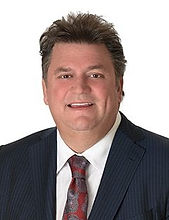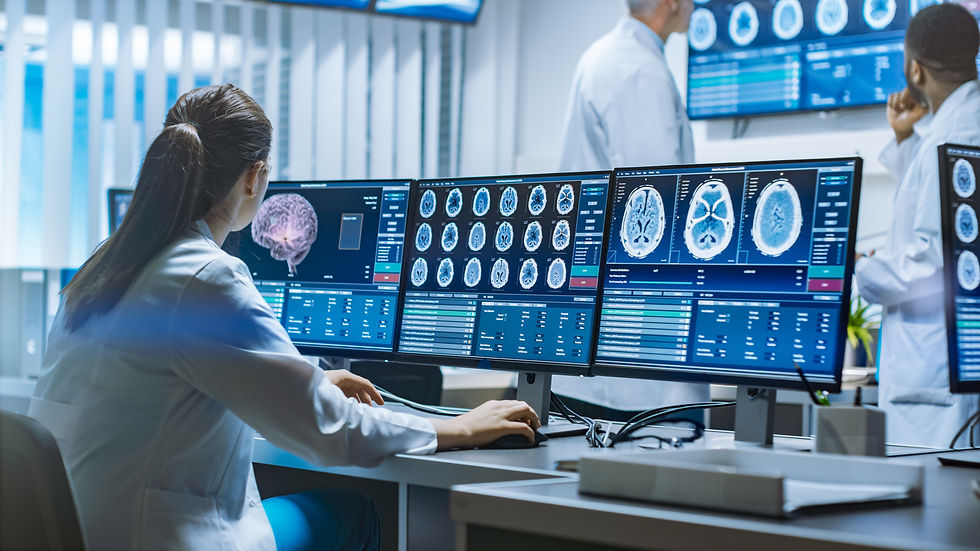
Ronald Jeffery Hilton

Ron Hilton, Co-founding partner of ÉlpisÉremo, and Cofounder & Chairman of the board of R&N Hilton Enterprises, CLUB R&N HILTON, and RJ HILTON LIVING. Ron is the Grandson of Conrad N Hilton and the son of Barron Hilton, an American business magnate, socialite, and hotel heir, much like his grandfather and father - a founding partner of the American Football League and the original owner of the Los Angeles Chargers., Ron embodies the HILTON American business magnate entrepreneurial and philanthropy spirit, and helped established ÉlpisÉremo with world leading scientific experts to accelerate cutting edge biotechnology for patients who are suffering from devastating degenerative and debilitating diseases for which no cure or treatment. He has deep knowledge and experience from working at Hilton. Currently Ron is involved in RJ Hilton Marketing focuses on International Real Estate Development and Music Management, Hospitality.

Ronald Jeffery Hilton

Ron Hilton, Co-founding partner of ÉlpisÉremo, and Cofounder & Chairman of the board of R&N Hilton Enterprises, CLUB R&N HILTON, and RJ HILTON LIVING. Ron is the Grandson of Conrad N Hilton and the son of Barron Hilton, an American business magnate, socialite, and hotel heir, much like his grandfather and father - a founding partner of the American Football League and the original owner of the Los Angeles Chargers., Ron embodies the HILTON American business magnate entrepreneurial and philanthropy spirit, and helped established ÉlpisÉremo with world leading scientific experts to accelerate cutting edge biotechnology for patients who are suffering from devastating degenerative and debilitating diseases for which no cure or treatment. He has deep knowledge and experience from working at Hilton. Currently Ron is involved in RJ Hilton Marketing focuses on International Real Estate Development and Music Management, Hospitality.

Brain Disease
Parkinson's disease
Alzheimer's disease
cerebral infarction
Traumatic brain injury
Types of Brain Disease
Parkinson disease

This is a disease that affects people who do not have enough dopamine in their body. As the dopamine nerve cells die, tremors and rigidity develop and movement slows down.
Stem Cell Treatment for Strokes
Stem cell treatment for Brain Strokes offers an effective alternative medical treatment to target and repair the brain tissue damage to try and recover lost functions along with measurable neurological improvements.
Traditional treatments for stroke patients can only manage the symptoms but cannot do much to try to repair the damaged tissue or replace the dead cells. Exosome therapy using neural stem cell growth factors help target the underlying cause of the patient’s injury and not just mask the symptoms. Neural stem cell transplants are safe and painless to inject and have shown to survive transplantation and begin differentiating into new neurons in the patients brain tissue.

Stem Cell Therapy for Alzheimer's disease

Armadyne Regeneration Center provides access to treatment that utilizes a patient’s stem cells isolated from their own bone marrow. There are multiple inherent benefits afforded by the utilization of bone marrow derived stem cells including their ability to differentiate into a broad variety of cells types (neurons, bone, cartilage, muscle, tendon, etc.), they are present at comparatively much higher levels than other stem cell types, possess unique immune-modulating properties, and they do not endanger a patient’s health the way other stem cells might.

What steps are involved in receiving treatment through
Step1
First a blood draw is performed followed by a minimally invasive bone marrow harvest via the iliac crest. Approximately 100cc’s of a patient’s own bone marrow is harvested through a minimally invasive, bone marrow aspiration procedure. Bone marrow aspirate is preferentially utilized because it is one of the richest, most accessible sources of stem cells in the human body and falls within the FDA guidelines of minimal manipulation.
Step2
Both the blood and bone marrow are immediately delivered to our dedicated, onsite laboratory staffed by our team of technicians. Once your sample is in the lab our advanced proprietary process isolates and excites regenerative cells and concentrates healing factors to hyper-physiological levels in order to facilitate the creation of a highly effective, injectable therapeutic.
Step3
Stem Cell Therapy utilizes both systematic and novel administration methods to fully saturate the body with stem cells while targeting specific areas of injury.

Alzheimer’s disease
Alzheimer's Disease is a serious neurological disorder, causing a person to lose memory and suffer from cognitive decline. This disease starts as asymptomatic and in time gets consistently worse. Generally, Alzheimer’s disease is diagnosed in elderly people, though it can effect a younger population as well.
About Treatment
Treatment of Alzheimer’s patients with donor stem cells line helps to gradually restore brain functions. Application of our cell therapy slows down the disease’s development and the progressive deterioration of brain functions. Armadyne Corp.has found these results in 75% of our patients
We offer 2 treatment programs for Alzheimer patients:
-
2-day treatment course with intravenous and subcutaneous injections of Donor stem cells line .
-
3-day treatment course with intravenous, subcutaneous and intrathecal injections of Donor stem cells line
Our 2-day treatment course is developed for the patients with mild and moderate-to-severe Alzheimer’s disease.
Our 3-day treatment course is developed for the patients with moderate-to-severe and severe Alzheimer’s disease; especially in cases involving fast progressive disease.
Each treatment course includes a session with our physiotherapy specialist (physical therapist) to additionally support the physical abilities of the patient.
.

The effectiveness of our Alzheimer’s disease treatment program depends on various factors: stage of the disease at time of treatment, duration of the illness at time of treatment, age of the patient, and other underlying health factors. The primary goal of our therapy is slowing down the progression of Alzheimer’s disease and to decrease the potential for further mental disorders related to the disease.
It is our to aim to improve the quality of life of the patient, as well as the patient’s family, using our donor stem cells line protocol for Alzheimer’s disease.
Brain Injury
About Treatment for Brain Injuries CTE & TBI
A Brain stem injury can occur via blunt force trauma to the brain no matter the age at onset. A head injury can result from a substantial handicap to the individual who sustained the brain injury and may trigger numerous types of cognitive impairments like lack of focus, memory or other motor-neurological disorders such as ataxia, ALS, Spinal muscular atrophy or Parkinson’s Disease. A brain stem injury may also consist of any damage that’s vascular by nature and not by blunt force trauma event that directly caused or instigated the intracranial injury.
Etiology of Traumatic Brain Injury
Modern treatment options for head injuries are usually divided into two types, closed head injuries, and penetrating head injuries. Overlap for the two types does exist, and closed head injurytraumatic brain Injuries treatments can be further segmented into mild, moderate, or severe/traumatic head injuries. A neurological injury is dissimilar from a traumatic brain injury (TBI) or stroke because an exterior force injures the brain in a damaging violent manner. TBI is an injury in the brain which is brought about by some the traumatic influence. TBI and brain damage can be caused by blows to the head (severe head trauma,) cerebral trauma, cranial penetration, or even violent trembling. Depending on the cause and severity of the trauma, the brain damage can be classified as serious, moderate or mild and damage from neurodegeneration can include, glial cells, neurons, endothelial cells, and Axonal Degeneration.

Glasgow Coma Scale – GCS
Traumatic Brain injuries are classified into three categories, including mild, moderate, and severe. The most commonly used system around the world to classify TBI severity is known as The Glasgow Coma Scale (GCS). The GCS scale (3–15) grades a victim based on their level of consciousness, which is based on measuring motor, verbal, and eye-opening reactions. A brain injury with a GCS of 13 or above is considered mild, a head injury with a GCS score of 9–12 is deemed to be moderate, and any GCS score below eight is regarded as a severe head injury.
The GCS scale can also be changed after the victim is resuscitated, post-traumatic amnesia (PTA), or after recovering from the loss of consciousness (LOC). Other methods of classifying the severity of TBI include using neuroimaging scans from CT, MRI, or PET to measure brain swelling, diffuse injury, or focal lesions. A mild TBI is also commonly known as a concussion, but such an injury result in brain contusion or lead to trauma-induced paralysis.
Stem Cells used in Cases with Anoxic Brain Damage
Each region of the human brain and spinal cord possess various types of specialized cells. The Armadyne Resurrection Center protocol works through usage of adult MSC+ cells, for specific regions that help in the development of the central nervous system (CNS).
The goal of our Neural cell replacement therapy and spinal cord injuries is to target the damaged areas and then to repair dead or diseased progenitor cells that are found in the neurogenic region.
Initial symptoms and signs of the TBI could consist of
Headaches
Blurred vision
Dizziness
Confusion
Seizures
Memory loss
Loss of consciousness
Paralysis
Coma

Neural Cell Replacement Therapy
In much more severe instances of traumatic brain-related injuries such as Chronic traumatic encephalopathy (CTE), some complications can be fatal. While the rigorousness of the TBI differs broadly, the consequences of it, in the long run, are frequently devastating and life-changing. TBI is typically very sudden, and early intervention is the key to a full recovery. The physical, non-congenital harm towards the brain by an external force may permanently or temporarily disrupt regular brain function. Brain characteristics and functions that may be affected include temporary or permanent loss of consciousness, speech, language, memory, character, mobility, joint pain with lupus, peripheral neuropathy and recognition of other people. Since the brain controls all bodily functions, any harm towards the brain,(neurons) no matter how little or severe it is, can impair physical and psychological activity.



